Since we last chatted, it seems the world has been tipped upside down. For online female entrepreneurs and small business owners, it felt like life was busy enough… but now the scales have been tipped further as you are juggling more balls to keep your business afloat and your families safe, fed, loved… but wait… here comes HOMESCHOOLING! 😱 Thankfully I know more than a few home education experts, so I have called on their knowledge and wisdom to share their top tips with you so that you can survive and thrive through this temporarily chaotic period our lives.
Enjoy! Rachel x
Chantelle Jacobs // Miss Jacobs Little Learners
In recent times, many parents have found themselves being promoted to Home School Educator in addition to their existing roles of Facilitators of #allthethings and it seems that this overnight rise is causing a bit of angst amongst us, and rightfully so – teaching is a four-year degree after all!
Well, I’m here to tell you that educating at home doesn’t have to be all fancy shmancy and cause you sleepless nights. It can be a lot of fun and a wonderful opportunity for you to focus on some of your child’s interests and strengths.
My top tip would be to plan and prepare. Create a basic outline of your day. How do you want your day to look?
Sit down in the morning with your kids and create a rough outline for the day. Think about meal breaks, chores, physical activity and learning areas you want to cover. Children are used to following set routines at school – they need the structure and thrive off it!
A simple outline for the day could look something like this:
[Click here to download your FREE printable Learning From Home Schedule]
Take a closer look at the Home Schedule that I use here: https://www.missjacobslittlelearners.com.au/product/daily-schedule-for-home-use-editable/
Start with your children’s interests and create learning experiences from there. Walks outside in nature can be a great place to start. Discussions about what you can see, smell and hear can lead into so many different learning areas.
Some examples could be:
- Draw your surroundings. Older children can draw a birds eye view or a map. Younger children could draw objects and label them (Art, Literacy and Numeracy)
- Go on a bird / bug hunt. Count and keep a tally of how many you see? (Numeracy)
- Research a particular thing you saw on your walk like birds, construction vehicles or transport, pets, clouds, bugs, cars and write an information report about it (Literacy, Science and Technology)
- Write a recount about your nature walk experience (Literacy)
- Come up with a list of words around the above chosen topic and use them as a spelling list for the week (Literacy)
Remember, this is a huge learning curve for you and your children so there’s going to be a lot of trial and error until you find something that works well for your family.
And finally, YOU are your child’s first teacher and your home is your child’s first school – You’ve totally got this!
About Chantelle: Chantelle is the teacher-author and mum behind Miss Jacobs Little Learners. She creates resources, shares knowledge and supports the teaching community so that educators can feel successful, proud, confident, in control and joy in their careers, classrooms and lives.
Website: www.missjacobslittlelearners.com
Facebook: www.facebook.com/missjacobslittlelearners
Instagram: www.instagram.com/missjacobslittlelearners/
Pitnerest: www.pinterest.com.au/missjacobslittlelearners/

Juliana Ong // Stories of Play
It’s a huge myth that we need to teach our kids before they will learn.
As a homeschool mum, my children play all day. I don’t do any planned structured activities or follow a homeschool curriculum simply because by playing all day, my children are learning all day.
Instead of teaching, I see my role as a facilitator, a guide and one who encourages curious exploration and self-directed learning to unfold.
I curate good quality toys and resources and make them available and accessible.
I set up the play and learning environment invitingly.
I make time to play with them, answer their questions and direct them to resources that will support them in their desire to learn.
Fan the flames of a child’s natural curiosity and desire to learn, teach them skills like self-confidence in their abilities, persistence, problem-solving, creativity and creative thinking, and that will set them up with the skills to learn and master whatever they need in their future.
About Jules: Jules is a preschool teacher turned SAHM to 3 girls under 4, a play parenting coach and founder of Stories of Play. Through her ebooks and online courses Playful Parent Academy and Authentic Learning, she helps parents raise creative children who enjoy playing independently for hours, so children have a wonderful childhood, learn authentically through play and parents can enjoy parenthood without burnout.
Website: www.storiesofplay.com
Instagram: www.instagram.com/storiesofplay
Facebook: www.facebook.com/storiesofplay
Pinterest: www.pinterest.com/storiesofplay
Free Guide to Independent Play: www.storiesofplay.com/playful-parent-toolkit
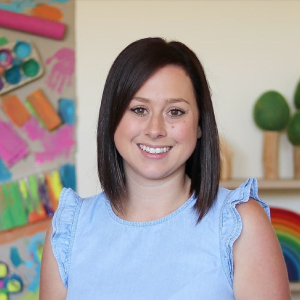
Lycie Wood // Simply Play Today
This year is my eleventh year of teaching, and goodness, what a year is it’s been! To be honest, I’ve found this week to be quite overwhelming as our school begins to prepare for distance teaching. I could only imagine how overwhelming it must be for parents with zero teaching experience. So when Rachel asked me if I would share some advice and tips for parents to make learning at home as successful as possible, I jumped on the opportunity!
First and foremost, the home environment is very different to the school environment. It is not practical to think your children should or will be working away at set tasks for six hours every day. Instead, aim to work on learning tasks for around 1-2 hours of each day. As for the rest of the day, the amount of incidental learning through joining in with the every day experiences at home (making meals, playing board games, being creative through drawing or painting, and most importantly, PLAY!) will far outweigh any learning done through a worksheet.
Also keep in mind that as teachers, we follow the lead of our students every day. Sometimes we have days where things just don’t go to plan, so our pre-planned activities go out the window and we change the day entirely to meet the needs of our students. The same will happen while your children are learning at home. Be flexible – if things just aren’t working today, pack it all away and try again tomorrow.
Lastly, be kind to yourself, and enjoy this extra time together with your beautiful family!
About Lycie: Hi! I’m Lycie, I’m a mum, a wife and an Early Years teacher! I love photography, heading to the beach, baking anything that involves chocolate, and then eating everything I bake – hello, chocolate chip cookies!
I’m also SUPER passionate about learning through play, both in the classroom and at home – so much so that I share simple play ideas for parents and educators on my Instagram page Simply Play Today
Blog: www.ThePaigeDiaries.com
Instagram: www.instagram.com/simply.play.today
Facebook: www.facebook.com/simplyplaytoday
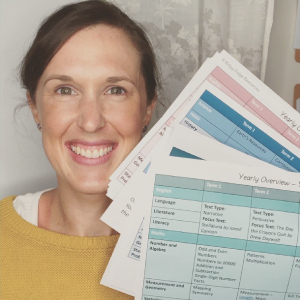
Mel Bagnall // Ridgy Didge Resources
When it comes to educating at home, parents need to remember that they don’t need to replicate what happens in the classroom. Nor do they need to try and fill the same number of hours their child spends in the classroom. With one-on-one attention, 2-3 hours of ‘formal’ learning activities will be sufficient. With this in mind, ‘formal’ learning doesn’t necessarily mean sitting at a desk with pencil and paper either. There are plenty of learning opportunities all around us that do not require a formal setting. For example:
- sounding out words on a cereal box
- counting and sorting as the dishwasher is unloaded or the laundry is pegged out or folded
- writing the shopping list / to do list for the day
- naming shapes while veges are chopped for dinner / unpacking the shopping
- how much tidying can be done in 1 minute / 5 minutes?
Learning is happening all the time at home and it can be the simplest real-life tasks that can be the most efficient at communicating a new concept or consolidating concepts already taught. If you are wanting to know what topics you need to be teaching your school aged children, I have broken down the Australian Curriculum requirements into a parent-friendly format so you can keep your kiddos on track to reaching age-appropriate milestones. This can be found here in our Free Resource Library. We also have a host of other resources in our shop that cover the key content areas in the curriculum. Full lesson plans and templates, ready for you to print and go. Everything you will need to keep your kiddos busy and on track to meeting Australian Curriculum requirements.
About Mel: My name is Melissa Bagnall and I am the teacher-author at Ridgy Didge Resources. With over 10 years of experience in the classroom and a child of my own I know what is needed to engage little learners. Fun is the key ingredient. With great excitement and enthusiasm, we continue to design and create resources with fun as the core of each activity.
Website: www.ridgydidgeresources.com
Instagram: www.instagram.com/ridgydidgeresources/
Facebook: www.facebook.com/ridgydidgeresources
Pinterest: www.pinterest.com.au/ridgyresources/
Free Resource Library: https://ridgydidgeresources.com/free-resource-library/
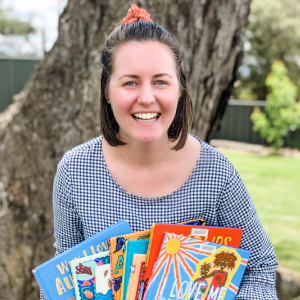
Tess Morriss // Big World Teaching
2020 has thrown some real curveballs, and we are only in April! Last week I called all my parents in my Foundation class to discuss the success of Term One, and also discuss the possibility for home learning for Term Two.
The number one thing I said over and over again is that parents and teachers are in this together – our partnership is more important than ever before! I went on to talk about the importance of keeping things simple and the need for routine. Use a visual timetable and plan out each day as a family. It will stop questions like ‘what’s next?’ and ‘when is lunch?’
Also planning your day ahead of time will mean you can block out time for play, work commitments, independent learning time, guided learning time and downtime. To keep your child busy and engaged, have a range of activities that your child can go to independently.
Puzzles, colouring pages, handwriting sheets, and playdough are great options for independent activities. If you are looking for more simple activities to engage your little learner, check out my blog and Instagram page!
About Tess: Hi! My name is Tess and I am Foundation Teacher and creator of Big World Teaching. I am passionate about engaging all students in learning through fun learning experiences! I love to share lesson ideas, classroom organisation tips and create fun and engaging resources aligned to the Australia Curriculum.
Blog: bigworldteaching.blogspot.com
Facebook: www.facebook.com/bigworldteaching/
Instagram: www.instagram.com/thelifeofmisstess/

Casey Patch // Lifelong Little Learners
My biggest tip for schooling at home would be to let go of all expectations!
I know the internet is full of photos of families doing their very best to homeschool right now, but what works for them won’t necessarily work for you and your little learners. Our children will be feeling a bit lost with these new (and very different) routines too – so focus first on connecting. Making time to fill their buckets and make sure they’re feeling loved before trying to do anything else even remotely related to school work. This might look like reading a story together; playing games in the backyard; baking some biscuits together; or simply having a tickle war. Once their heart is feeling full and happy, they’ll be more likely to sit and do some more formal learning with you too.
I’d also like to suggest reframing what homeschooling looks like. When your child is at school, they’re 1 of 30 students in a classroom so what might be 6 hours of school is spread between all those other students too. Just setting aside 30 minutes to an hour a day to do some work with your child is going to do wonders! Follow their lead, take breaks as needed and know that we’re all in this together.
About Casey: My name is Casey and I am the founder of Little Lifelong Learners. I have a background as a Primary School teacher but left the classroom to raise my own babies. Little Lifelong Learners has grown so much so I feel very blessed to be able to support LOTS parents, teachers and children across the globe. In January of 2019, my husband saw how much fun we were having and left his job to join us too! We are so fortunate to be working with one another, but it’s also pretty special to be at home together raising our little ones.
Website: www.littlelifelonglearners.com
Facebook: www.facebook.com/littlelifelonglearners/
Instagram: www.instagram.com/littlelifelonglearners/
Pinterest: www.pinterest.com.au/casey_patch/
Free prompts for learning at home: www.littlelifelonglearners.com/learnathome/
This homeschooling guide for small business owners was brought to you by Brand Alchemy: the brand foundation course that guides you to become the the master of your brand. Doors open 30 April. Click here to join the waitlist.

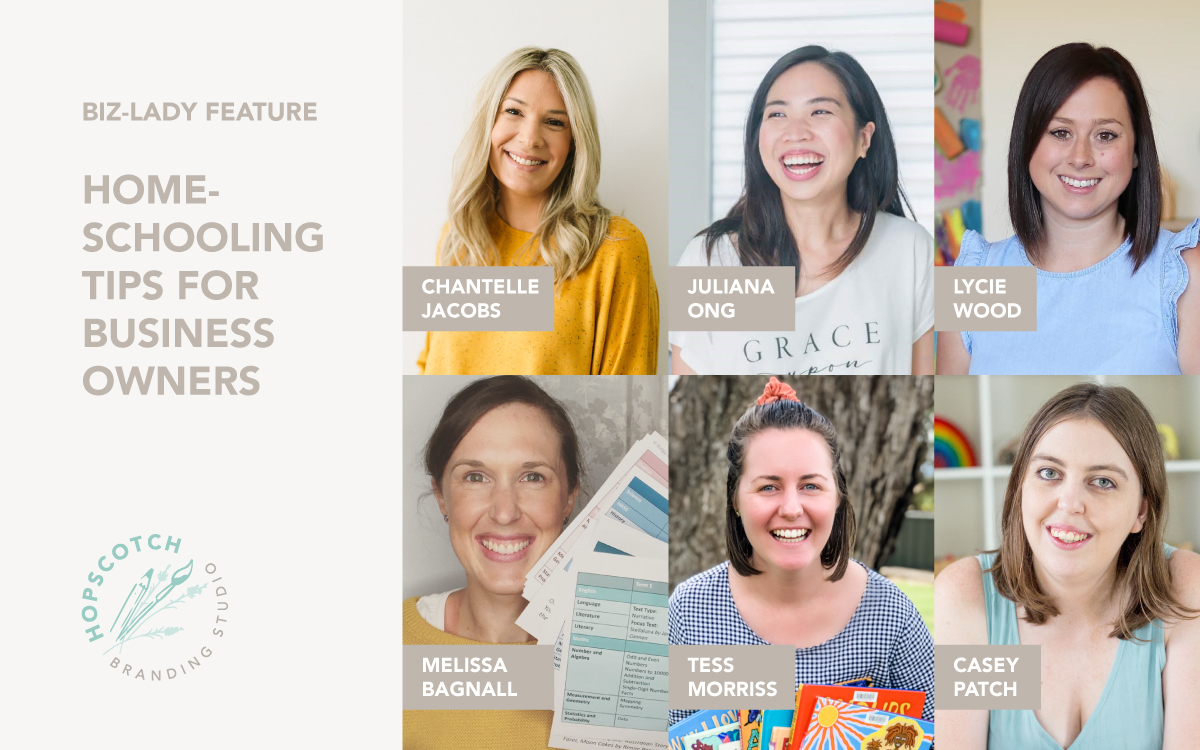
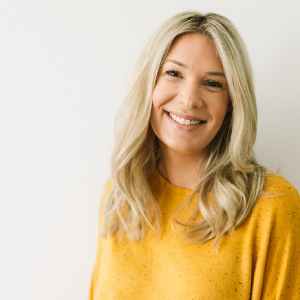
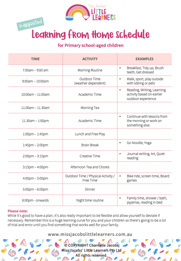
Loved this so much! Thanks for putting this together, Rachel. All the best to you and everyone else during this strange season ❤️